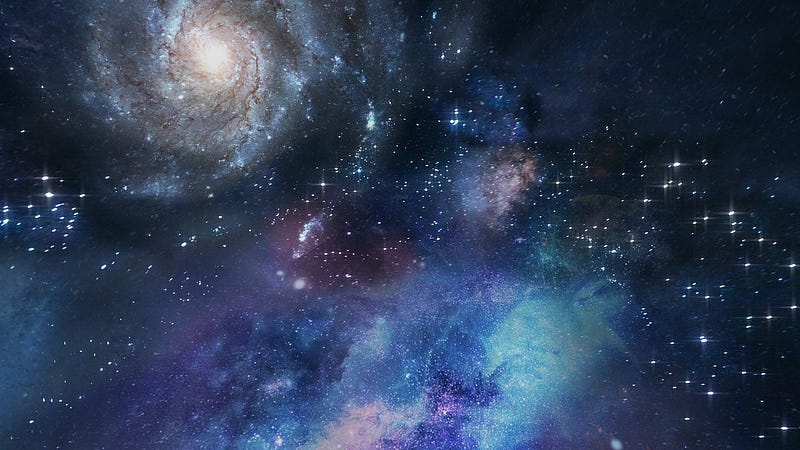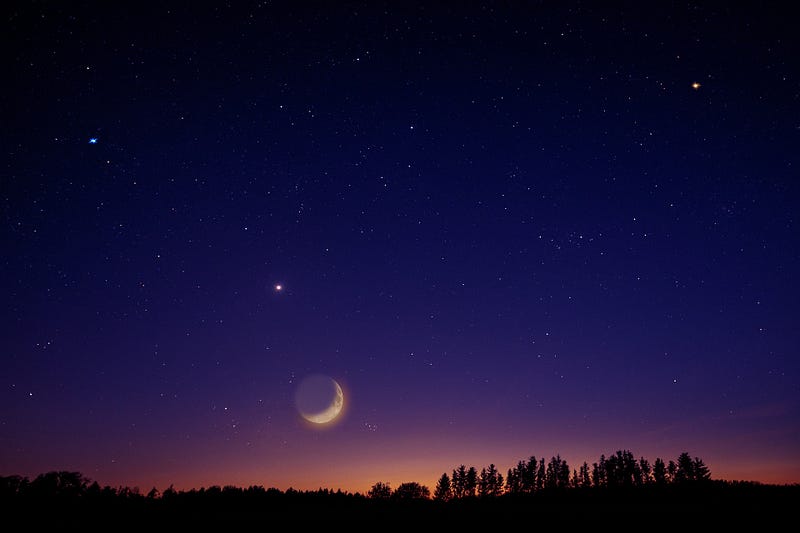An Explanation of the Amazing Universe in Five Minutes.
I know that statement is ridiculous, but if you would like an easy-to-understand short explanation of how the Universe has evolved, then my article might interest you.

British spelling
We now know that most galaxies are moving away from each other; in other words, the universe is expanding.
If we could reverse that process, everything would end up in the same place. It is thought that the universe burst into existence from that tiny spot.
Most scientists agree that everything we know and experience around us today, from speeding galaxies to ancient gas clouds, began approximately 13.8 billion years ago.
We call that amazing event the Big Bang; that gargantuan explosion or expansion was the starting point of everything we see today, including space and time.
Estimates at this time put the number of galaxies in the universe at two trillion, which is 2,000,000,000,000.
The energy generated by the Big Bang caused an unbelievable expansion of space. It is thought that during the first split-second of the Big Bang, the universe expanded faster than the speed of light.
Around 380,000 years after that event, the conditions were right for the first atoms to form, they were mainly hydrogen and helium. How important hydrogen was and still is in the universe cannot be underestimated.
When the universe was about 200 million years old, hydrogen and helium were drawn in by gravity and formed denser areas, resulting in the formation and birth of the first stars.
A molecular cloud is a vast area of space that is denser than its surroundings. Eventually, gravity causes parts of the cloud to collapse, this area is where protostars (young stars) begin to form.
As more matter accumulates in one area, it causes pressure, temperature, and density to rise. When a critical temperature of 15 million degrees Celsius is reached, nuclear fusion takes place, and a main-sequence star is born. The star begins to shine as it converts hydrogen into helium.
The protostar process can take up to a million years before a main-sequence star is born. If a star fails to reach this critical mass and temperature, it will become a brown dwarf or a dead star.
In the cores of ancient stars, hydrogen was needed to kick-start the production of heavier elements that are spread throughout the universe today.
What was missing around those first stars were planets, moons, asteroids and other celestial objects. It took the first generation of stars millions of years to create elements heavier than hydrogen and helium.
Iron is the heaviest element that can be created by nuclear fusion in stars.
When massive stars come to the end of their lives, they can explode in supernovae. The conditions at the time of a supernova can produce heavier elements than iron.
Those gargantuan explosions throw massive amounts of new elements far out into space; eventually, they would come together and form the first planets and other objects like the ones we see throughout the universe today.
Now the universe could evolve into a far more complex place.

Our spiral galaxy, the Milky Way, is estimated to be 13.6 billion years old, not much younger than the universe. Our galaxy is roughly 100,000 light-years across, so what does that mean?
Light travels 9.46 trillion kilometres in one year, so to find the diameter of the Milky Way in kilometres, you simply multiply that large number by 100,000.
Yes, the Milky Way is a massive structure, but minuscule in comparison to the size of the universe.
A trillion is 1 followed by 12 zeros.
It is difficult for astronomers to accurately assess how many stars there are in the Milky Way; a lower estimate would be 100 billion stars, and higher estimates can be up to 400 billion.
Many of the star systems scattered throughout our galaxy will be similar to our Solar System, which consists of all the planets, dwarf planets, moons, asteroids, and all the other celestial objects that orbit our local star, the Sun.
The Solar System with us onboard is travelling through space at 800,000 kilometres per hour and will take roughly 230 million years to complete one orbit around the centre of the Milky Way.
One orbit around the Milky Way is called a cosmic or galactic year. Our Solar System has circled the centre of our galaxy more than twenty times since its birth, it could be said that the Solar System is 20 cosmic years old, which sounds a lot younger than over 4.5 billion years old.

As I have said, the sun is over 4.6 billion years old. Fortunately for us, our local star was big enough for nuclear fusion to happen. By the time the sun had formed completely, it had used up almost all the mass in its vicinity.
The new sun was surrounded by a spinning, swirling disc of leftover material called a solar nebula. It took millions of years but inside this flattened disc, the planets, dwarf planets, moons, asteroids, and other celestial objects formed.
The reason planets are in a level plane around the Sun is because of this flattened disc. Astronomers can see different stages of this disc formation in other star systems within our galaxy.
Here are two reasons why life as we know it can exist on our magical world: The earth is the perfect size, and it orbits the sun in the Goldilocks zone or habitable zone.
That area in space ensures that it is neither too hot nor too cold; therefore, water can be in three states: solid, liquid, and gas. Water is needed for all forms of life to exist.
Like everything else in the Cosmos, Earth has a lifespan that will end naturally sometime in the distant future, in the meantime, I hope that mankind will treat our home with respect for the sake of ourselves and the millions of other species that share our world.
The end.
Come and Join Me on a Fictional Space Journey.
By the time we arrive at our final destination, you should have gained a far better understanding of how vast and ancient the universe is and how it has evolved over 13.8 billion years.





